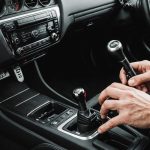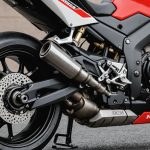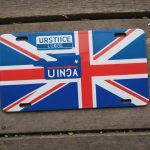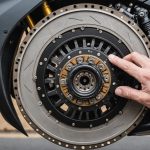Ultimate Guide to Obtaining Your Unique Custom License Plate in the UK: A Comprehensive Step-by-Step Breakdown
Understanding the Basics of Custom License Plates in the UK
Before diving into the process of obtaining a custom license plate, it’s essential to understand the basics. In the UK, vehicle registration plates are managed by the Driver and Vehicle Licensing Agency (DVLA), which oversees the issuance, transfer, and retention of registration numbers.
Legal Requirements and Types of Plates
All vehicles in the UK must have a valid registration plate attached, typically to both the front and rear of the vehicle, although some exceptions apply, such as motorcycles which may only require a rear plate[1].
Additional reading : Essential guidelines for uk car neon underglow lighting: what you must know!
Custom or personalised number plates, often referred to as “cherished” or “private” plates, allow vehicle owners to choose a unique registration mark that can be more meaningful or distinctive than the standard issue. These plates can be used to display names, initials, hobbies, or other personal identifiers[5].
Planning Your Custom License Plate
Choosing Your Registration Mark
The first step in obtaining a custom license plate is to choose your desired registration mark. This can be a fun and creative process, as you can select a plate that reflects your personality, interests, or even your vehicle’s model.
Also to see : Top tips to safeguard your car upholstery from sun damage in the uk
- Personal Significance: Many people choose plates that include their initials, names, or significant dates.
- Hobbies and Interests: If you have a particular hobby or interest, you can find a plate that reflects this.
- Vehicle Model: Some owners prefer plates that match their vehicle’s model or make.
For example, if your name is John Smith and you own a Ford Mustang, you might look for a plate like “JS123” or “MUST4NG”[5].
Checking Availability
Once you have an idea of what you’re looking for, you need to check if the registration mark is available. You can use online services provided by DVLA-registered dealers like Motor Marks or SwiftReg to search for available plates.
- Visit the website of a DVLA-registered dealer.
- Use their search facility to enter your desired registration mark.
- Check if the plate is available for purchase.
Purchasing Your Custom License Plate
Finding a Registered Dealer
To ensure a smooth and legal process, it’s crucial to purchase your custom license plate from a DVLA-registered dealer. These dealers handle all necessary documentation and ensure that the transfer is completed efficiently.
- Motor Marks: A Leicester-based family business with over 40 years of experience in private number plate sales and transfers[3].
- SwiftReg: Recognised for their extensive range of DVLA personalised registrations and fast track transfer services[5].
The Purchase Process
Here’s a step-by-step guide to purchasing your custom license plate:
- Search for your desired registration mark on the dealer’s website.
- If available, proceed to purchase the plate.
- Pay the required fee, which includes the cost of the plate and the DVLA transfer fee (£80).
- Ensure all necessary documentation, such as your vehicle’s logbook (V5C), is ready.
- The dealer will handle the transfer process with the DVLA.
Transferring Your Custom License Plate
Using the V317 Form
To transfer your custom license plate to your vehicle, you will need to use the DVLA V317 form, officially titled ‘Application to Transfer or Retain a Vehicle Registration Number’.
- Download or Obtain the Form: You can download the V317 form from the DVLA website or obtain it from a DVLA office[4].
- Fill Out the Form: Complete the form with your personal details, vehicle information, and the registration number you are transferring.
- Payment: Include the £80 transfer fee.
- Submission: Submit the form and payment to the DVLA.
Steps to Transfer Your Plate
Here is a detailed breakdown of the transfer process:
### Step 1: Fill Out the V317 Form
- Download and complete the V317 form.
- Ensure all sections are filled out accurately, including personal details and vehicle information.
### Step 2: Submit the Form
- Send the completed form and payment to the DVLA at:
DVLA Personalised Registrations
Swansea SA99 1DS
### Step 3: Receive Confirmation
- The DVLA will process your application and send you a new updated logbook (V5C) featuring your vehicle’s new registration.
- This process typically takes up to two weeks[2][4].
### Step 4: Order New Number Plates
- Once you receive your new logbook, you can order your new number plates from a registered supplier.
- Ensure the plates are made to UK regulations and standards[2][3].
Retaining Your Private Registration
If you decide to sell your vehicle or do not have a new vehicle to transfer your private plate to immediately, you can retain your registration number.
Using the V317 Form for Retention
To retain your private registration, you will again use the V317 form but select the option to retain the registration number.
### Step 1: Fill Out the V317 Form
- Complete the V317 form, selecting the retention option.
- Ensure all necessary documentation is in order.
### Step 2: Submit the Form
- Send the completed form and payment to the DVLA.
- The current fee for retention is £80[4].
### Step 3: Receive Your Retention Certificate
- The DVLA will issue a retention certificate, allowing you to keep the registration number for up to 10 years.
- You can assign this number to a new vehicle at any time during this period[4].
Practical Insights and Actionable Advice
Ensuring Compliance
It is crucial to ensure that all your number plates are made to UK regulations and standards. Here are some key points to remember:
- Approved Suppliers: Always use approved suppliers to make your number plates to avoid any legal issues[2][3].
- Correct Format: Ensure the plates are in the correct format and include all necessary details such as the registration number, font style, and reflective material.
Budgeting and Planning
Purchasing and transferring a custom license plate involves costs, so it’s important to plan ahead.
- Fees: The DVLA transfer fee is £80, and you may also need to pay for the purchase of the plate itself[4].
- Time: Allow up to two weeks for the DVLA to process your application and send you the updated logbook[2].
Example Scenario
Let’s say you’ve decided to buy a new car and want to transfer your cherished number plate from your old vehicle to the new one.
- You purchase the new car and decide to keep your cherished plate.
- You fill out the V317 form to transfer the registration number.
- You submit the form and payment to the DVLA.
- Once the DVLA processes your application, you receive a new updated logbook.
- You then order new number plates with your cherished registration mark.
Obtaining a unique custom license plate in the UK involves several steps, but with the right guidance, it can be a straightforward process. Here are some final tips to keep in mind:
- Plan Ahead: Ensure you have all necessary documentation and allow sufficient time for the transfer process.
- Use Registered Dealers: Always purchase and transfer your plates through DVLA-registered dealers to ensure legality and efficiency.
- Compliance: Make sure your number plates are made to UK regulations to avoid any issues.
By following this guide, you can enjoy the satisfaction of having a unique and meaningful registration mark on your vehicle.
Table: Comparison of Key Services for Custom License Plates
| Service Provider | Key Features | Transfer Time | Additional Services |
|---|---|---|---|
| Motor Marks | Over 40 years of experience, fast online order facility, cheap bargain plates starting from £25.00 plus VAT and DVLA fee[3] | Same day transfer possible | Full after-sales support, handles all necessary documentation |
| SwiftReg | Fast track transfers, over 60 million great-value DVLA personalised registrations, secure payment processing[5] | Fast track transfer available | Handles transfer of MOT/Tax with DVLA, dedicated support team |
| Legal Show Plates | Premium quality number plates, compliant with UK regulations, step-by-step guide for transferring plates[2] | Up to two weeks for DVLA processing | Provides guidance on retaining private registrations |
Quotes and Insights
- “The V317 form is essential for transferring or retaining a registration number. It ensures the process is legal and efficient,” says a DVLA spokesperson[4].
- “Choosing a custom license plate can be a fun and creative process. It allows you to add a personal touch to your vehicle,” notes a representative from Motor Marks[3].
- “Ensuring compliance with UK regulations is crucial. Always use approved suppliers to make your number plates,” advises a specialist from SwiftReg[5].
By understanding these steps and tips, you can navigate the process of obtaining your unique custom license plate with ease, making your vehicle stand out on the road.










